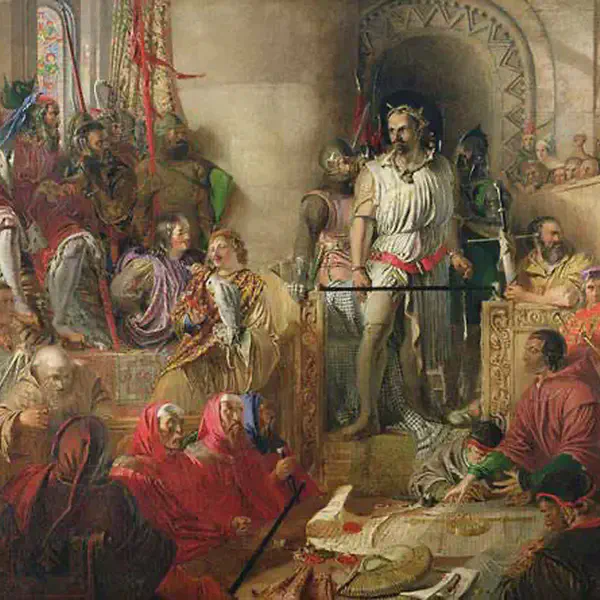
William Wallace Betrayed and Captured by the English.
August 05, 1305
Sir William Wallace (c. 1276 – August 23, 1305) was a Scottish patriot who led his country against the English occupation of Scotland and King Edward I of England during significant periods of the Wars of Scottish Independence.
Sir William evaded capture by the English until 5 August 1305, when Sir John de Menteith, a Scottish knight loyal to Edward, turned Wallace over to English soldiers at Robroyston, near Glasgow. Wallace was transported to London and tried for treason at Westminster Hall where he was crowned with a garland of oak to suggest that he was the king of outlaws. He responded to the charge, I could not be a traitor to Edward, for I was never his subject. The absent John Balliol was officially his king; however, Wallace was declared guilty.
On 23 August 1305, following the trial Wallace was removed from the courtroom, stripped naked and dragged at the heels of a horse to Smithfield Market. He was drawn and quartered: strangled by hanging but released near death, emasculated, eviscerated, beheaded, then divided into four parts (the four horrors) at the Elms in Smithfield. His head was placed on a pike atop London Bridge, which was later joined by the heads of his brother, John, and Sir Simon Fraser. His limbs were displayed, separately, in Newcastle, Berwick, Stirling, and Aberdeen.
The plaque in the photograph stands in a wall of St. Bartholomews Hospital near the site of Wallaces execution at Smithfield. Scottish patriots and other interested people frequently visit the site, and flowers often appear there.
A sword which supposedly belonged to Wallace was held for many years in Dumbarton Castle, and is now in the Wallace National Monument near Stirling. However, examination of the sword by experts has concluded that its design belongs to a period a few centuries after Wallace.